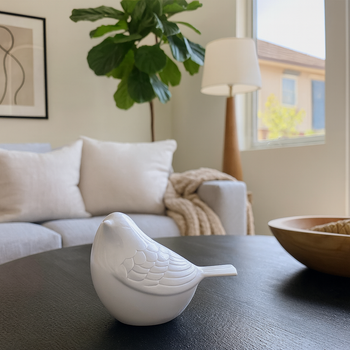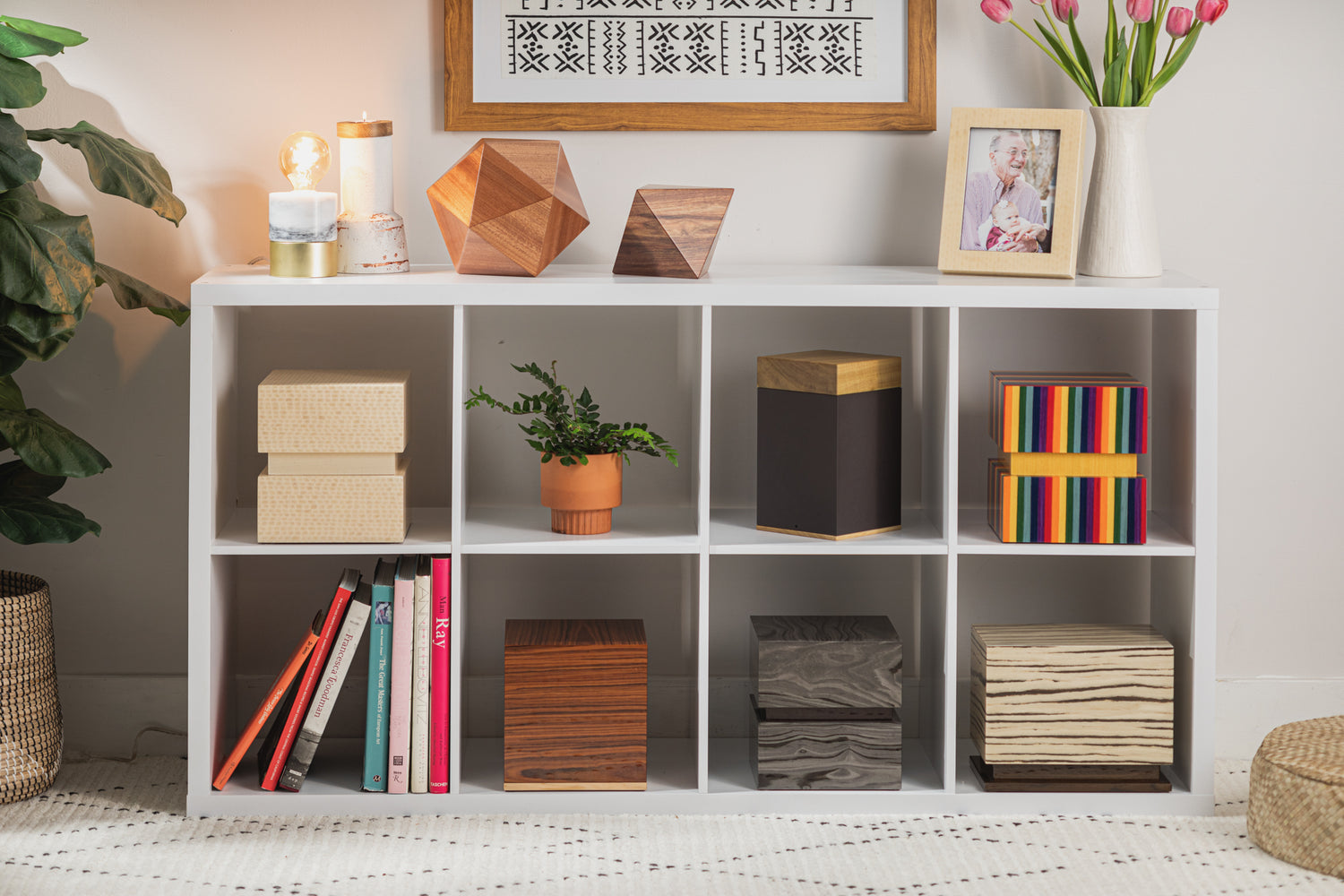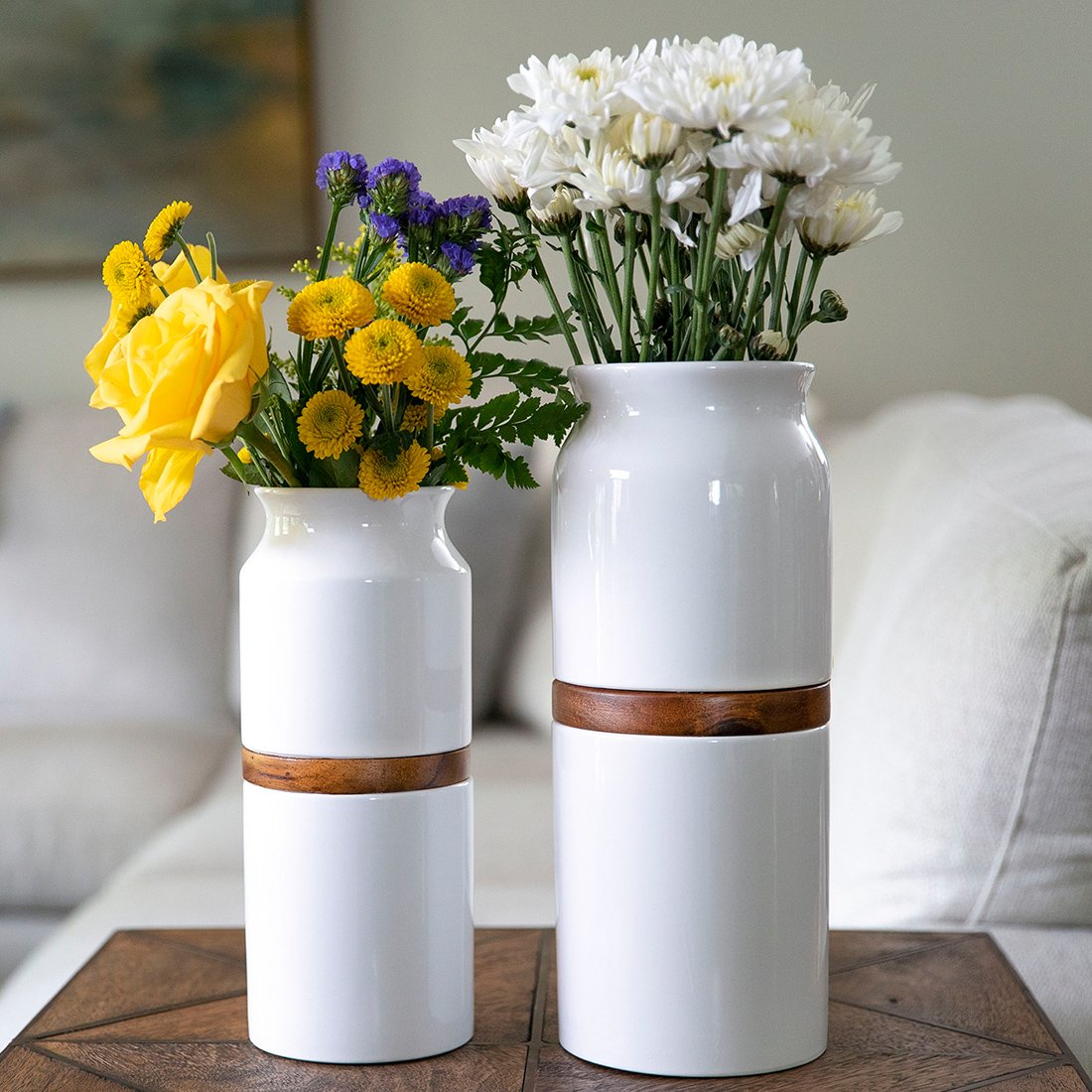

Creating a memorial garden is a beautiful way to honor a loved one, but not everyone has access to a backyard or spacious outdoor area. Those living in apartments, condos or urban settings may feel limited. However, with a bit of creativity and planning, you can cultivate a tranquil memorial space on a balcony, windowsill or even inside your home. Plants bring life, color and growth into the places where you grieve and remember. In this article, we’ll explore the benefits of small-space memorial gardens, discuss how to choose plants and containers, and offer design inspiration to transform tiny corners into living tributes.
The Healing Power of Plants in Small Spaces
Plants have long been associated with healing and remembrance. Caring for something living after a loss can be soothing. Watching a plant sprout, bloom or reach toward the light mirrors the grieving process—growth and change over time. For those in compact living spaces, a small garden brings nature indoors, improving air quality, boosting mood and providing a daily ritual of care. Plants remind us that life continues, even after loss, and tending to them can become a meaningful routine.
A small-space memorial garden does not need to be elaborate. It can be as simple as a single potted plant with a ribbon or tag bearing your loved one’s name, or as intricate as a miniature garden with stones, candles and photos. The key is to design something that feels personal and soothing to you.
Choosing the Right Location
Before selecting plants and containers, consider where your memorial garden will live. Location affects light, temperature and accessibility—all crucial for plant health and your enjoyment.
Balcony or Patio: Balconies receive varying amounts of sunlight depending on their orientation. South-facing balconies get the most direct sun, while north-facing areas receive indirect light. Measure how many hours of sunlight your balcony gets each day to choose appropriate plants. Ensure your balcony can support the weight of plants and containers, and adhere to any building regulations.
Indoor Corners: Windowsills, shelves or alcoves make excellent spots for indoor gardens. East or west-facing windows provide moderate light, while south-facing windows offer bright light. North-facing windows are best for shade-tolerant plants. Avoid placing plants near drafts, heating vents or air conditioners.
Vertical Spaces: If floor space is limited, think vertically. Hanging planters, wall-mounted shelves or ladder-style plant stands maximize surface area. Use hooks or brackets rated for the weight of your pots.
Shared Communal Areas: Some apartment complexes have shared roof decks, courtyards or community gardens. You might contribute a potted memorial plant or work with neighbors to create a small tribute area.
Selecting Plants for Your Memorial Garden
The plants you choose should thrive in your chosen location and reflect your loved one’s personality or interests. Consider:
Light Requirements: Match plants to the amount of light available. For sunny balconies, herbs (rosemary, sage), succulents and flowering annuals (petunias, geraniums) work well. For partial shade, try ferns, begonias or impatiens. Indoors, low-light plants like pothos, snake plants and ZZ plants are hardy and forgiving.
Size and Growth Habit: Choose plants that stay compact or can be trimmed easily. Dwarf varieties of trees or shrubs, bonsai, or mini roses are ideal for small spaces. Trailing plants like ivy, string of pearls or philodendron can cascade from hanging baskets.
Symbolic Meaning: Many plants carry symbolic significance. Lavender represents devotion and calm; rosemary symbolizes remembrance; forget-me-nots literally mean “remember me.” Peace lilies are often used at funerals and thrive indoors. Orchids symbolize love and beauty. Consider your loved one’s favorite flower or herb.
Fragrance: Aromatic plants like jasmine, lavender or mint can evoke memories and bring sensory comfort. In tight spaces, be mindful of strong scents that could overwhelm.
Edible Plants: Growing herbs, salad greens or small fruits offers a literal taste of life. Tending edible plants connects you to the earth and provides nourishment. Use compact varieties like patio tomatoes or dwarf citrus trees for balconies.
Succulents and Cacti: These are low-maintenance and come in many shapes, colors and textures. Succulents symbolize enduring and resilient love. They store water, representing stability and perseverance.
Choosing Containers and Planters
The right container ensures plant health and contributes to the memorial aesthetic. Here are options to consider:
Traditional Pots: Terracotta, ceramic or glazed pots are classic choices. Ensure they have drainage holes to prevent waterlogging. Choose colors or patterns that remind you of your loved one.
Self-Watering Planters: These have reservoirs that reduce watering frequency, ideal for busy or forgetful gardeners. Some are stylish enough for indoor display.
Hanging Baskets: Perfect for balconies or indoor hooks. They free up floor space and allow trailing plants to cascade, creating a lush look.
Rail Planters: Designed to sit on balcony railings, these maximize limited outdoor space. Check weight restrictions and secure them properly.
Vertical Planters: Pocket planters, stackable pots or modular wall planters allow you to create a living wall. They’re excellent for herbs and small flowers.
Repurposed Items: Old teacups, mason jars, wooden boxes or vintage tins can become charming planters. Ensure you drill drainage holes or add a layer of pebbles at the bottom.
Mini Greenhouses: For those in cooler climates, tabletop greenhouse boxes protect delicate plants. They create a microclimate for humidity-loving species.
Consider labeling each container with a tag bearing a name, date or quote. Engraved markers or painted stones add a personalized touch.
Designing Your Small-Space Memorial Garden
Design is about more than plant selection—it’s about creating a cohesive, soothing environment that encourages reflection. Here are design tips:
Create Layers: Use planters of varying heights to give depth. Place taller plants at the back or in corners, medium plants in the middle and small or trailing plants at the front or hanging above.
Incorporate Keepsakes: Include memorial items like a small photograph in a weatherproof frame, a candle holder, a decorative stone engraved with a name or a piece of jewelry. If you have a cremation urn, choose a style that fits the space—some urns are designed for display and include plant compartments.
Use Textures and Colors: Mix leaf textures—broad leaves with feathery fronds, glossy leaves with matte—to create visual interest. Pair complementary flower colors or stick to a soothing monochromatic palette.
Add Water Features: Small tabletop fountains or water bowls add a gentle sound that can be meditative. Ensure they are safe for indoor use and keep electrical cords tidy.
Incorporate Lighting: Soft fairy lights, solar lanterns or LED candles extend your garden’s visibility into the evening and create a warm glow for quiet remembrance.
Include Seating: If space allows, add a comfortable chair or cushion. Even a stool or bench can transform the area into a place to sit and reflect. Ensure the seating fits and doesn’t crowd the plants.
Plan for Seasons: Choose a mix of evergreen and seasonal plants so your memorial garden remains vibrant year-round. Swap in seasonal flowers or decorations—mini pumpkins for autumn, evergreen branches for winter, bulbs for spring.
Integrating Memorial Symbols and Rituals
Your small-space memorial garden can serve as a backdrop for rituals and remembrance activities:
-
Memory Stones: Paint small rocks with messages or symbols and place them among your plants. These can commemorate special dates, qualities you admired, or notes of gratitude.
-
Candle Lighting: Keep a candle or LED light in a safe holder to light during anniversaries, birthdays or moments when you wish to connect with your loved one.
-
Wind Chimes or Bells: Hang a small chime nearby. The gentle sound can evoke your loved one’s presence whenever a breeze passes through.
-
Prayer Flags or Ribbons: Write wishes, prayers or affirmations on fabric strips and tie them to a plant stand or railing. These fluttering messages can symbolize the movement of your love into the world.
-
Herbal Offerings: If you grow herbs, dry some and burn them as incense. The scents of sage, rosemary or lavender can evoke calm and remembrance.
These rituals transform your garden from a collection of plants into a sacred space. Regularly tending to these objects and performing rituals creates routine and meaning.
Caring for Your Indoor and Balcony Memorial Garden
Maintenance is crucial to keep your memorial garden thriving. Here’s how to care for your plants:
-
Watering: Small containers dry out faster than large ones. Water when the top inch of soil feels dry. Avoid overwatering; root rot is a common issue in potted plants. Consider using a watering can with a long spout to reach hanging baskets.
-
Feeding: Fertilize plants during their growing season. Use a balanced liquid fertilizer diluted to half strength every few weeks. Avoid fertilizing succulents frequently; they need less food.
-
Pruning: Remove dead or yellowing leaves to keep plants healthy and prevent disease. Pinch back leggy growth to encourage bushier plants.
-
Pest Control: Inspect leaves regularly for pests like aphids, spider mites or fungus gnats. Use organic solutions such as neem oil or insecticidal soap if needed.
-
Repotting: Plants outgrow containers. Repot to a slightly larger pot when roots circle the bottom or growth slows. Use fresh potting soil.
-
Cleaning: Dust indoor plant leaves regularly to help them photosynthesize efficiently. Wipe surfaces and sweep fallen leaves or petals to keep your garden tidy.
Caring for your garden becomes a ritual of remembrance. Each watering, pruning or repotting is an act of love and upkeep for the memory space you’ve created.
Adapting to Challenges
Small-space gardening comes with specific challenges. Here’s how to manage them:
-
Limited Sunlight: Use grow lights if your indoor space lacks natural light. LED grow lights are energy-efficient and come in various styles, including strips and clip-on lamps.
-
Temperature Fluctuations: Balconies can become very hot in summer and cold in winter. Bring sensitive plants inside during extreme temperatures. Consider insulation like plant covers or move pots against walls for protection.
-
Weight Restrictions: Balconies have weight limits. Use lightweight containers made of resin or plastic, and potting mix instead of garden soil, which is heavier.
-
Water Drainage: Avoid water dripping on neighbors or damaging balcony floors by using saucers or self-watering planters with overflow holes.
-
Pet Safety: If you have indoor pets, choose non-toxic plants. Many common houseplants, including lilies, philodendrons and pothos, are toxic to cats and dogs. Research safe alternatives like spider plants, Boston ferns and African violets.
By anticipating these challenges, you ensure that your memorial garden remains healthy and safe for you and your household.
Expanding Beyond Plants
If you lack a green thumb or are sensitive to allergies, you can still create a memorial garden atmosphere:
-
Artificial Plants: High-quality faux plants look remarkably realistic and require no care. Mix them with dried flowers or preserved moss for variety.
-
Dried Flower Arrangements: Dried bouquets last for months or years. Choose flowers with significance, such as roses or lavender, and display them in vases.
-
Terrariums: Closed glass terrariums with preserved moss, stones and figurines create miniature worlds. They’re ideal for office desks or small shelves.
-
Zen Gardens: Tabletop sand gardens with stones and small rakes provide a meditative experience. You can add an inscribed stone or tiny urn to the arrangement.
-
Art and Sculpture: Place a small statue, plaque or artwork that symbolizes your loved one. This could be a figurine of an angel, a sculpture of hands, or a custom piece commissioned in their memory.
These alternatives allow you to design a contemplative space without the ongoing maintenance of live plants.
Creating a Seasonal Routine
Seasonality enhances the meaning of your memorial garden. Consider incorporating rituals tied to the calendar:
-
Spring: Plant bulbs like daffodils or tulips in containers that bloom in spring. These flowers represent renewal and hope. Clean and refresh the garden, replacing winter decorations with new growth.
-
Summer: Add bright annuals or herbs. Decorate with seashells or lanterns to evoke summertime memories. Spend evenings tending the garden as the days grow long.
-
Autumn: Swap out summer annuals for mums, ornamental kale or pansies. Incorporate mini pumpkins or gourds. Use warm-toned candles or lanterns.
-
Winter: For outdoor balconies, consider hardy evergreens or dried arrangements. Decorate with pinecones, twinkle lights or seasonal ornaments. Indoors, bring in festive plants like poinsettias or amaryllis.
By rotating decorations and plants with the seasons, you stay engaged with your memorial garden year-round. This rhythm can be particularly comforting during holiday periods when grief may resurface.
Conclusion
A small-space memorial garden proves that you don’t need a sprawling backyard to honor a loved one. By thoughtfully selecting plants, containers and decorative elements, you can create a living tribute on a balcony, windowsill, or corner of your home. This intimate space invites reflection, healing and connection. Tending to your plants and rituals becomes a gentle act of remembrance, nurturing both the garden and your own heart. Whether you choose fragrant herbs, vibrant flowers, symbolic succulents or artistic alternatives, let your memorial garden reflect the essence of the person you love and the space you live in. In nurturing life, you celebrate life, even in the smallest of spaces.
Our Best Selling Collection
Frequently Asked Questions
What are the shipping options for my memorial?
Oaktree offers free nationwide shipping on all urns and cremation jewelry items, with delivery typically taking 2-5 business days, including processing time. Need it sooner? Expedited shipping (overnight or 2-day) is available at checkout for an additional cost, and we will also prioritize processing for faster delivery. If you need international shipping, please contact us first to confirm availability and rates.
How long will it take for my engraved item to arrive?
Engraved urns and cremation necklaces require an additional 1-3 business days for personalization before shipping. If you need faster delivery, please contact us—we’ll do our best to expedite processing and accommodate your timeline. Expedited shipping options are also available at checkout to ensure your memorial arrives as soon as possible.
What do I do if I never received my order?
If your order hasn’t arrived within 10 business days, please contact us so we can track your shipment and resolve any issues. We’ll ensure your memorial reaches you as soon as possible.
What do I do if I received a defective order?
If your order arrives damaged or defective, contact us right away. We take pride in our high-quality craftsmanship and will work quickly to replace or repair your item at no additional cost.
Can I return my urn or cremation necklace? What is your return policy?
Oaktree offers a 100-day return and exchange policy for non-engraved items. Due to personalization, engraved urns are final sale and cannot be returned. For full details on how to start a return or exchange, visit our Returns & Exchanges page.
How do I make changes to an urn I’ve already ordered?
If you need to modify an order, contact us as soon as possible. If your urn is already engraved, we may not be able to make changes, but we’ll do our best to accommodate your request before processing.
How are your urns made? Where do the materials come from?
Oaktree’s urns are handcrafted in the USA and Europe using sustainable, locally sourced materials. Our artisans ensure each piece is beautifully designed and built to honor your loved one’s memory with care.
How do I choose the right urn size?
Each product page includes detailed dimensions, weight capacity, and cubic inches to help you select the right urn. As a general guide, 1 cubic inch holds 1 pound of pre-cremation weight. If you need help choosing, feel free to contact us.
Some urns are marked as “sold out.” When will they be available?
Our handmade urns may take a few weeks to restock. If you’re interested in a specific style, contact us for an estimated restock date, and we’ll notify you when it’s available.
Does Oaktree place the ashes into my urn?
Yes, we offer an optional ash transfer service for an additional fee. If you’d like us to handle this process, please contact us when placing your order. You’ll need to mail the ashes to us, and we’ll carefully transfer them into your selected urn.
How do I transfer ashes into my urn?
Cremated remains typically arrive in a sealed plastic bag inside a plastic container. To transfer them, simply place the sealed bag inside your urn. If needed, use a funnel for precise placement. If you have any concerns, our team is happy to assist.
How do I order an engraved urn?
To personalize your urn, select “Yes” under “Would you like your item engraved?” on the product page. If you’d like a custom design beyond standard engraving, contact us and we’ll explore options to create a unique tribute.
Can my urn be shipped directly to a funeral home?
Yes! During checkout, you can enter the funeral home’s address for direct shipping.
Can I customize my urn beyond engraving?
Yes! In addition to engraving, we offer custom design services, including unique finishes, symbols, or artwork. If you’d like to personalize your urn beyond standard options, contact us to discuss customization possibilities.
What materials are Oaktree urns made from?
Our urns are crafted from premium materials such as wood, ceramic, marble, metal, and biodegradable materials. We focus on sustainable sourcing and high-quality craftsmanship to create lasting memorials.
Do you offer keepsake urns or mini urns?
Yes, we offer keepsake urns and mini urns, which are smaller versions designed for sharing ashes among family members or keeping a small portion as a personal tribute.
Can I pre-order an urn for future use?
Absolutely! Many customers choose to pre-order an urn in advance. This ensures availability and allows for customization without time constraints. Contact us to arrange a pre-order.
Do you offer pet urns?
Yes, we provide a range of pet memorial urns designed to honor beloved pets. These are available in different materials and sizes to suit dogs, cats, and other pets.
How do I clean and maintain my urn?
Urns require gentle care to maintain their beauty. Use a soft cloth and mild cleaner for metal or ceramic urns. Avoid direct sunlight and moisture to preserve wood urns. Contact us for specific care instructions based on your urn’s material.
Can I travel with an urn? Are they TSA-approved?
Most Oaktree urns are TSA-compliant, making them safe for air travel. Choose a non-metal urn to ensure easy screening. We recommend carrying the urn in your carry-on bag and bringing the cremation certificate from the funeral home.
How do I track my order?
Once your order ships, we’ll send you a tracking number via email. You can use this to monitor the shipment status. If you don’t receive tracking details, contact us for assistance.
How do I contact Oaktree if my question isn’t answered here?
We’re happy to assist! Visit our Contact Us page to reach us via email, chat, or phone. Our compassionate team is ready to help.






